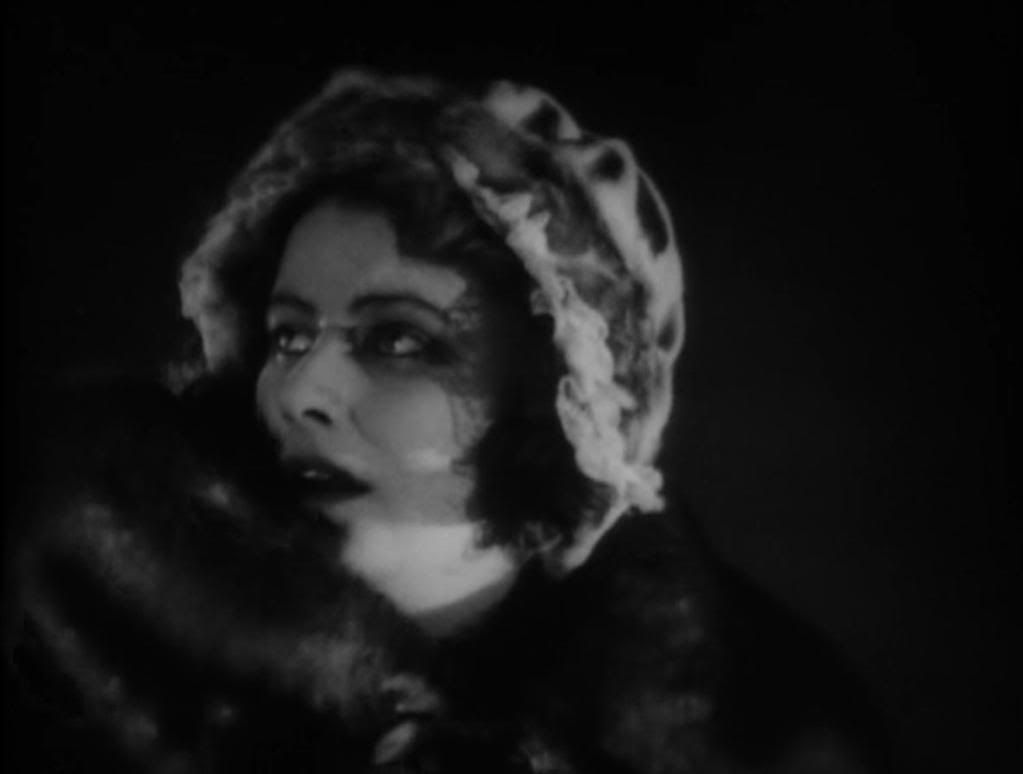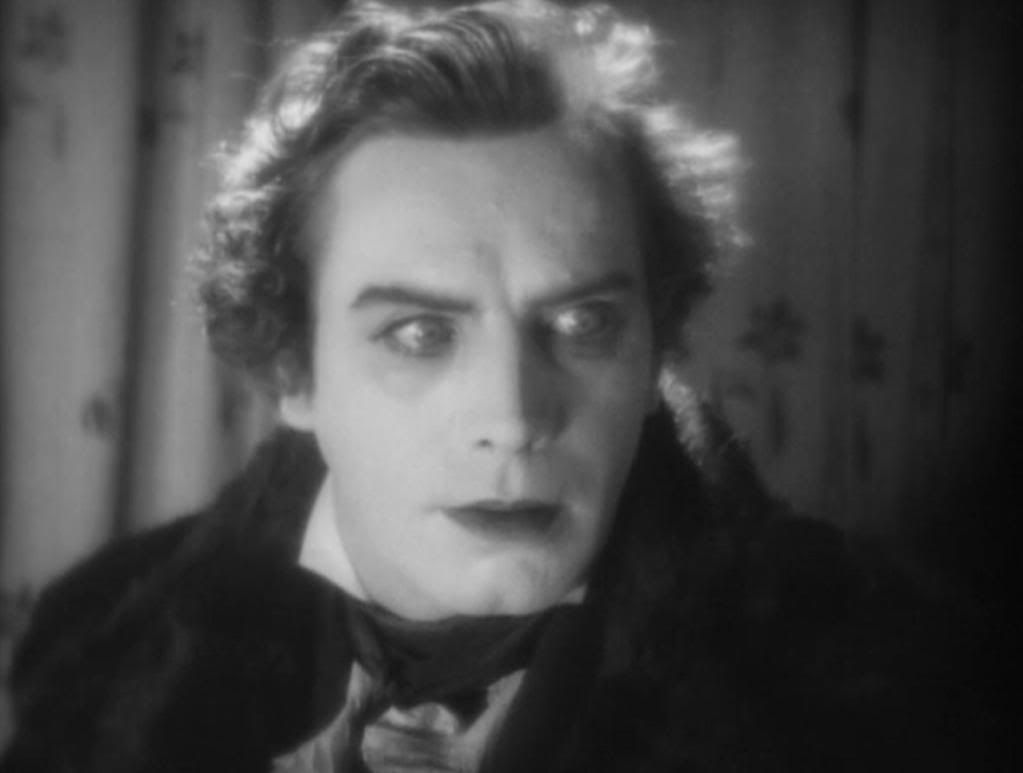
Bleak, wintery and expressive, Mauritz Stiller's The Saga of Gösta Berling is a three-hour silent epic bursting at the seams with sturm und drang hysteria. The story of the disgraced former priest Gösta Berling (Lars Hanson), adapted from Selma Lagerlöf's novel, is a succession of tragedies, one after another, as the defrocked Gösta seems to bring bad luck to anyone who associates with him. The film is as much the story of the woman around him as it is of Gösta himself, since the former priest is often the least interesting figure in his own story.
Indeed, the women are the dominant figures here, from the scheming Mãrtha Dohna (Ellen Hartman-Cederström) — who sets Gösta up to marry her stepdaughter Ebba (Mona Mårtenson) merely because Ebba will be disinherited if she marries a commoner — to Margaretha (Gerda Lundequist), the domineering Major's wife who runs her castle with an iron hand and a fierce manner. Then there's Elisabeth (Greta Garbo), who marries Mãrtha's son Henrik (Torsten Hammarén), an overly formal stiff who's constantly gaping foolishly like a fish out of water. This was the 19-year-old Garbo's first major part: Stiller discovered her, renamed her, and cast her in the role that would first send her to fame. She's already electric here, projecting a raw quality that contrasts nicely against the rounded softness of her face — no trace here of the hard edges and stern expressions that she would be famous for later in her career. Garbo's Elisabeth starts out as a minor figure in the film, one woman among several whose lives are touched, generally for the worse, by Gösta's presence, but later in the film she returns and becomes increasingly prominent in the final hour.
Garbo is introduced in anything but a glamorous way, snacking and casually chatting with her new husband as they return from their wedding in Italy; she's eating the last of the food from her home country, and at one point she puts her fist over her mouth to cover a very un-lady-like belch. This little touch is characteristic of this film, which has a very uncouth, raw sensibility. The most appealing aspect of Gösta Berling is its rude, lewd approach to the stuffy period drama. The characters are all trussed-up and confined by billowing, extravagant clothes, the men choked up to their chins with high collars, the women hiding beneath massive floppy hats and layers of coats and dresses, thick furs shielding them against the winter chill. The Major's wife, trying to convince Gösta not to commit suicide, goes to great effort to untie the thick ropes wound around her torso, holding her heavy winter coat in place, and as she tells him the story of her love affair and her unhappy marriage, her coat and scarves hang down all around her, thick piles of clothes that seem to physically weigh her down. It's as though the fashion of the period and the layers amassed against the cold are trapping the characters, and they rebel against this stuffiness with outbursts of visceral bad behavior, drunken revelry and outrageousness, like Gösta's elaborate opening prank with a shaggy devil, or the food fight that interrupts a society banquet.

The devil at the beginning of the film, a dancing trickster who wouldn't be at all out of place in a contemporaneous German Expressionist film, is a harbinger of things to come, bursting into being out of a puff of smoke and a few flames that prefigure the fiery catastrophe of the climax. The film becomes really unhinged in its final hour, breaking free of the sometimes plodding chamber melodrama of the earlier sections in favor of a desolate, searing extended climax set almost entirely in the chilly wastelands around Margaretha's home. Stiller builds an absolutely stunning atmosphere throughout these sequences, as the castle is set on fire, smoke drifting everywhere in thick white clouds, the flames licking over everything. It's hellish and harrowing, the fire lighting up the night, igniting a series of melodramatic confrontations that clear the way for Gösta's last act redemption — everything has to be razed to the ground in order to rebuild, the sins of the past wiped clean.
The hellish fire of this climax is juxtaposed against the icy wastes of the surrounding area, the mountains of snow, the frozen lake across which Gösta and Elisabeth race in an eerie late-night ride, pursued by feral wolves, Stiller mostly focusing on Elisabeth's terrified face glowing palely in the darkness. Stiller makes excellent use of the icy territory, making the cold and the ice palpable. The characters are always bundled up, smothered in furs and blankets, and their breath makes icy puffs of condensation in the air in front of their mouths. Stiller makes the landscape bleak and foreboding, a snowy tundra with the wind whipping, knife-sharp, across the lake, the dark sky hanging low, the moon casting only a diffuse glow over the grim, grainy darkness. The scene where Gösta's sled is chased by the wolves is especially compelling, with Gösta determinedly whipping his horse to run ever faster, while Stiller periodically cuts to minimalist long shots, panning with the sled as the dark blots of the wolves give chase.
The film isn't always so bracing, and at three hours its pacing is sometimes slack, with one melodramatic twist after another. The performances, too, are mostly broad and stagey, especially Hanson's Gösta, but Stiller does make good use of the frequent poignant closeups of the film's many suffering, tormented women. In one of these shots, Elisabeth's gaze drifts rightward, flicking briefly up to look directly into the camera, as though seeking solace there, then turning back to her husband, who's upbraiding her for her interference in the relationship between Gösta and Ebba. This is a story of suffering and redemption, in which the moral hypocrisy of polite society creates a cycle of punishment and disgrace that's finally only broken with a happy ending that at last clears away the ice and snow, and the fire too, in favor of the blossoms of spring.
I love this movie - it's actually one of my favorites silents, oddly enough. I'm not even sure why really, as usually I'm not that keen on silent melodramas. But this one really clicks for me.
ReplyDeletePartly it's Garbo to be sure. I also find Hanson a more compelling lead than you do, with a certain discomfited intensity that serves him well both here and in Sjostrom's Scarlet Letter where he plays another fallen clergyman.
Above all, there's just a great atmosphere to this. I don't know how else to put it but...it lacks "specificity." The world the characters live in, while identifiable in terms of history and geography still seems to be somehow isolated and individualized, their own private universe that, watching, you can get as lost in as they obviously are.
And of course it's got some great pieces. A sorely underrated slice of Scandanavia, imo. Glad you appreciated it though you were more ambivalent than I. There's definitely a lot to admire.
Or I shouldn't say it lacks specificity - it's very specific. Yet you can't quite pin it down to a particular, recognizable, and therefore dismissable context. It transcends that and becomes kind of mythic. If that makes sense.
ReplyDelete